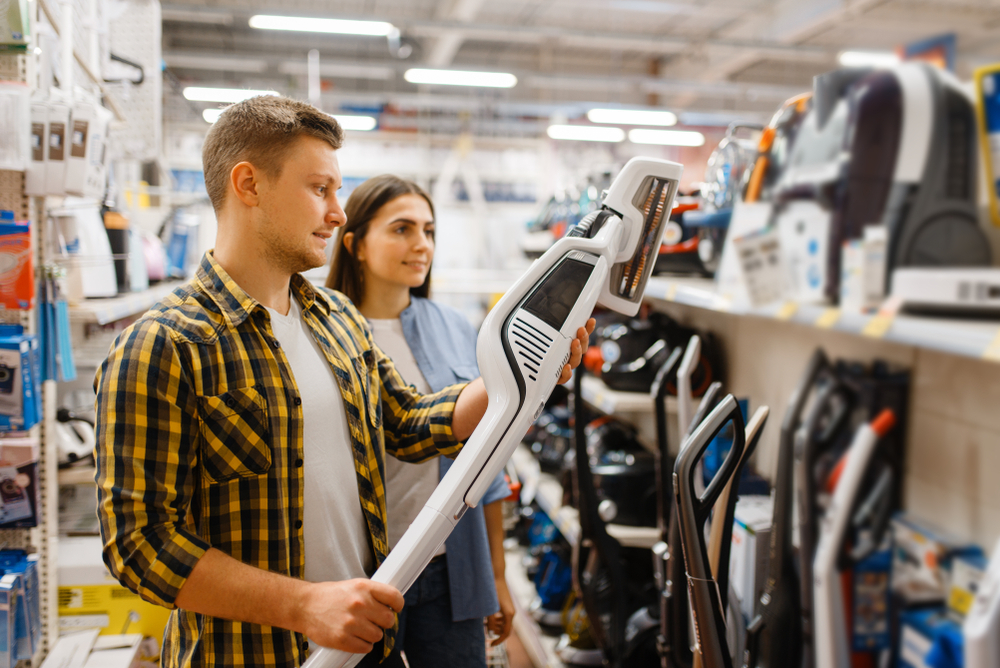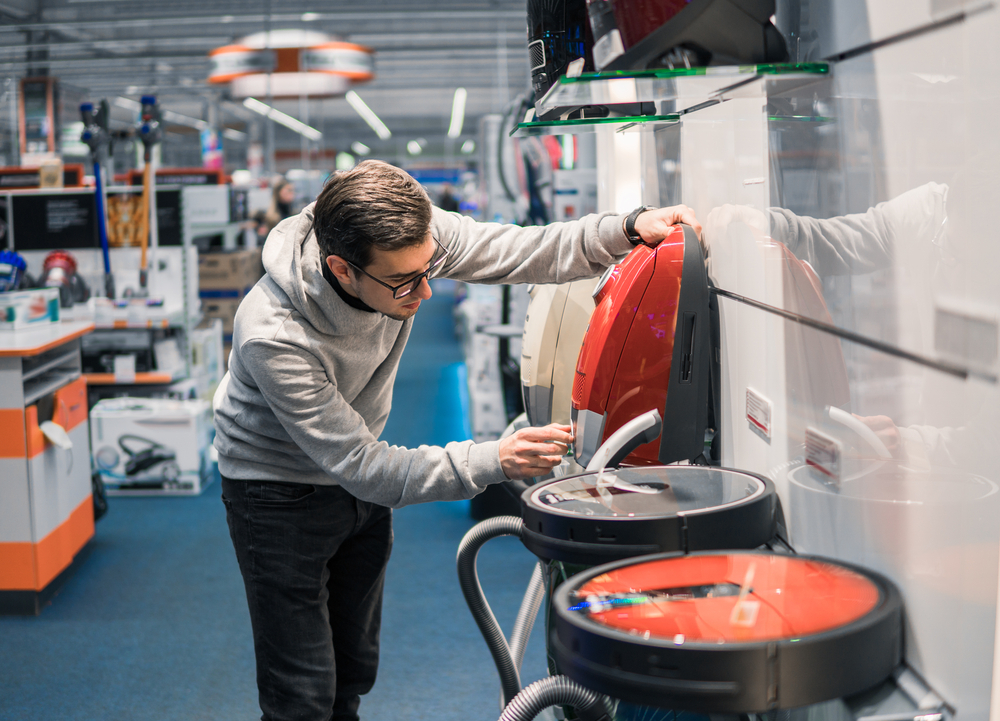6 Crucial Aspects to Consider when Buying a Vacuum Cleaner
The vacuum cleaner is a crucial cleaning tool for workplaces such as hospitality, factories, shops, and offices. Vacuum cleaners provide a safe and clean environment to remove dust and other residues from floors and surfaces. Buying a vacuum cleaner is not as easy as purchasing groceries. It consists of a suction motor connected by a hose to a nozzle. A collection container or the collection bag recovers the material.
There are different types on the market: wet and dry vacuums, carpet cleaners, dry vacuums, and vacuums for industrial and particular use. It is essential to know what elements to consider to make the right decision.
Table of Contents
6 factors to consider when buying a vacuum cleaner

There are multiple factors to consider, but we’ve outlined the most important ones below. Whether you seek a bagged or bagless vacuum, you need to select wisely. And this blog will assist you in doing just that.
1. Suction power
Suction power is the difference between the atmospheric pressure and the vacuum’s internal pressure. Regardless of the unit of measurement, whether peak AWS, HP, or Pa, as this difference increases, suction power increases.
For instance, considering an excellent corded stick vacuum cleaner must have powerful suction power. Without the capacity to powerfully keep up dirt and dust, your new acquisition is as good as dead.
Your floor type will also determine the suction power required. On hard floors, the low suction power works well. It is rugs and carpets that require high suction power for thorough cleaning. Some vacuums have a suction control option, which is a big plus.
2. User-friendly:
Buy a vacuum cleaner that is easy to use. However, when getting a new vacuum cleaner, it is highly recommended that you read the user manual first and become familiar with the new appliance, utilize it, and perhaps more importantly, how to take care of it.
The new vacuum cleaner should have easy-to-use controls that you can easily reach, especially if you need to change the suction power and floor type frequently.
Dirt containers should have easy to empty straight into the bin without touching the dirt. If a brush roll is present, you should use a self-cleaning brush roll.
Many advanced vacuums are digital units with sensors throughout the unit. They are measuring different parameters and signaling the consumer when it is time to clean or replace things like the battery, air filter, brush roll, etc.
3. Noise Level
The vacuum cleaner with the sound of a jet fighter starting up is not an excellent solution for a household vacuum cleaner, regardless of its other qualities.
Typically, you must avoid anything that is louder than 80 dB Vacuums with a noise level below 60dB are best, and you can use them easily when others are sleeping. However, most vacuum cleaners have a noise level between 65 and 75dB. Reducing the suction power often minimizes the noise level as well.
4. The capacity of the vacuum cleaner dirtbag
Whether the unit is bagged or bagless, a small dirt bin means frequent emptying and, therefore, a slower overall clean. At the same time, a massive amount of vacuumed dirt that remains in the dirt container or dirtbag can lead to unpleasant odors.
For most full-size vacuums, a dirt tank capacity of at least one liter is desirable to allow the user to vacuum large areas without interruption. However, an easy-to-empty procedure helps the consumer empty the dirt tank after each use.
While some individuals prefer bagged vacuum cleaners, others prefer bagless devices. Both vacuum cleaners types have their advantages and downsides, and it is often up to the consumer to decide which one to use.
Personally, bagless vacuums have characterized by low maintenance costs. In contrast, bagged vacuums can get messy when emptying the dirtbag unless it’s a disposable bag that automatically closes and catches the dirt inside.
In short – reusable vacuum bags can save you some money. However, they can also create a big mess.
5. Dry or wet vacuum cleaner
You can use dry vacuums for cleaning dry dirt, while wet vacuum cleaners can pick up damp dirt and sometimes liquids directly.
Huge canister wet vacuum cleaners are excellent construction site vacuum cleaners. You can use them to pick up both dry and wet debris and smaller water splashes.
Most homes have dry vacuum cleaners, and they do a good job. If such vacuum cleaners accidentally pick up wet dirt, you must stop it, clean it, and thoroughly dry it before the next use. If this happens, visit Ownermanual.co and download the manual to be sure.
6. Cleaning Range

The cleaning radius of a vacuum cleaner reflects the effective distance at which this device can clean carpets and other floorings.
The range of a handheld vacuum is typically the length of its power cord. However, a handheld vacuum with a flexible cleaning hose has a maximum range of the power cord length combined with the length of the hose.
Of course, cordless vacuum cleaners are not dependent on the mains and have an “infinite” range. However, they also have disadvantages – a limited amount of energy stored in the onboard batteries.
Furthermore, thanks to advances in technology, the best cordless devices have a runtime of 30 to 60 minutes. The cordless units clean large areas on a single charge – and no, those devices that are comparable to corded devices in terms of suction power and other services are not cheap.
The Bottom Line:
Many vacuum cleaners are on the market, differing in their application, technical, and performance characteristics. When buying a vacuum cleaner, it is always best to find out which features you require and for what reasons.